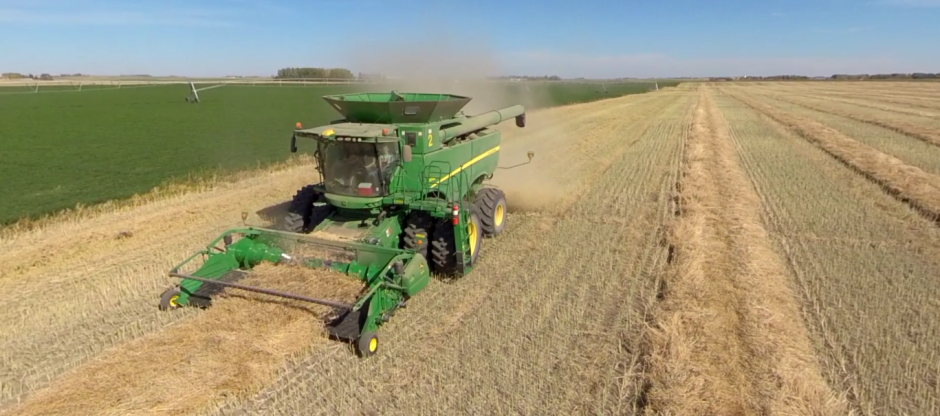Farm Sector Profitability Expected To Weaken in 2015
Both net cash and net farm income are forecast to decline for the second consecutive year after reaching recent highs in 2013. Net cash income is expected to fall by 27.7 percent in 2015, while the forecast 38.2-percent drop in net farm income would be the largest single-year decline since 1983 (in both nominal and inflation-adjusted terms).
See table on farm income indicators. Excel icon (16×16) Chart data Download higher resolution chart (2085 pixels by 1667 pixels, 300 dpi) Highlights
Both net cash and net farm income are forecast to decline for the second consecutive year after reaching recent highs in 2013. Net cash income is expected to fall by 27.7 percent in 2015, while the forecast 38.2-percent drop in net farm income would be the largest single-year decline since 1983 (in both nominal and inflation-adjusted terms).
Crop receipts are expected to decrease by 8.7 percent ($18.2 billion) in 2015, led by a forecast $8.6-billion decline in corn receipts, a $5.7-billion drop in soybean receipts, and a $2.7-billion drop in wheat receipts.
Livestock receipts could fall by 12.0 percent ($25.4 billion) in 2015, a reversal from the 43.8-percent increase in receipts over 2005-14 period.
The reduction in crop and livestock receipts is largely driven by changes in price rather than changes in output.
Government payments are projected to rise 10.4 percent ($1.0 billion) to $10.8 billion in 2015.
Total production expenses are forecast to fall 2.3 percent, the first time since 2009 that they have fallen year over year. Energy inputs and feed are expected to have the largest declines. Expenses are forecast to increase for labor, interest, and property taxes.
After several years of steady improvement, farm financial risk indicators such as the debt-to-asset ratio are expected to rise in 2015, indicating increasing financial pressure on the sector. However, debt-to-asset and debt-to-equity ratios remain low relative to historical levels.
Declining farm sector assets resulting from a modest decline the in value of farmland, investments, and other financial assets—as well as higher debt—are forecast to erode equity by 4.8 percent, the first drop since 2009.
After several years of steady improvement, farm financial risk indicators such as the debt-to-asset ratio are expected to rise in 2015, indicating greater financial pressure on the sector. However, the sector appears to have remained well insulated from solvency risk.
The Value of Agricultural Sector Production Forecast To Fall for the Second Straight Year in 2015
The annual value of U.S. agricultural sector production is expected to fall 9.2 percent to $427.7 billion in 2015, as the value of both crop and livestock production decline (see table on value of production). The value of production is comprised primarily of cash receipts adjusted for any changes in inventories and home consumption use, plus all farm-related income. The falling value of crop production (to a forecast $186 billion in 2015) represents a second consecutive decline from 2013’s record high of $233.2 billion, and the third straight year of declining crop cash receipts despite a net inventory reduction. The value of U.S. livestock production is also forecast to decline 12.3 percent (to $191.3 billion) in 2015 as a large drop in receipts more than offsets the sector’s inventory expansion. Falling Crop Prices and Receipts Forecast for 2015
Crop cash receipts—the cash income from crop sales in the 2015 calendar year—are forecast to fall 8.7 percent in 2015, led by broad price declines for most field crops. Corn cash receipts are expected to decline the most, falling by $8.6 billion in 2015. Since hitting a record high in 2012, corn receipts have fallen 36 percent. While production is expected to drop slightly relative to 2014, corn prices are expected to fall by a larger percentage in 2015. Cash receipts for soybeans and wheat are also expected to decline from 2014, falling $5.7 and $2.7 billion, respectively. Rice cash receipts are expected to decline by 36.4 percent ($1.3 billion) on lower expected production and calendar-year prices.
Despite an expected increase in production, cash receipts for fruits and nuts are expected to remain flat in 2015 due to lower prices received by farmers. Production of grapefruits and oranges are both expected to fall as citrus greening disease has resulted in unmarketable fruit throughout Florida and elsewhere. California citrus production has held steady or increased relative to 2014, despite continued drought conditions. California has historically accounted for a large portion of U.S. vegetable and fruit/nut cash receipts. The drought there is likely to affect fruit/nut and vegetable production, and to reduce cotton and rice cash receipts. California is the second largest rice producing State and accounts for a large share of long-staple cotton production (for more information, see the ERS drought page).


